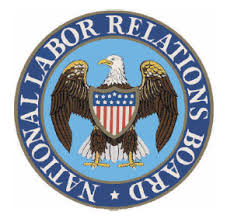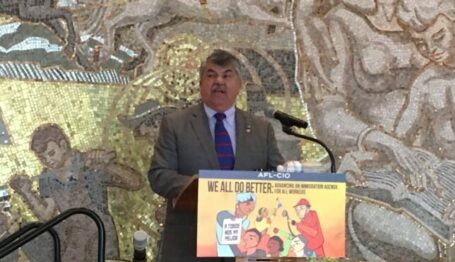Labor Watch
To Recuse, Or Not to Recuse: That’s the Question for the NLRB


Earlier this year, the National Labor Relations Board (NLRB) vacated a decision due to ethical concerns. The case in question, Hy-Brand Industrial Contractors, Ltd., was the most recent development in a string of cases deliberating over the subject of joint-employment standards as part of a campaign launched in 2012 by the Service Employees International Union (SEIU).
Essentially, joint-employer standards determine if two businesses share legal liability over certain employees. Prior to an Obama-era decision known as Browning-Ferris, a company had to demonstrate “direct and immediate” control over the terms and conditions of another entity’s employees for it to be considered a joint-employer and thus subject to stricter labor laws. For companies with a more indirect relationship with certain employees, such as franchisers or companies employing subcontractors, Browning-Ferris astronomically increased their legal liability and regulatory compliance costs. This was the goal of the SEIU, which is seeking to unionize McDonald’s nationwide by pressuring the franchising company to force its franchisees to negotiate with SEIU.
Since Browning-Ferris reversed decades of precedent and sparked controversy, joint-employer standards were re-examined under the Trump administration’s newly appointed NLRB members. (By custom, the President’s party is given a 3-2 majority on the Board.) In the 2017 joint-employer case, Hy-Brand Industrial Contractors, Ltd, the NLRB overturned Browning-Ferris and restored pre-Obama era standards—that is, until NLRB Inspector General David Berry determined that there was a conflict of interest in the Hy-Brand decision, thus rendering Hy-Brand null.
What was the conflict of interest?
The IG argued that Board member William Emanuel should have recused himself because his former employer, Littler Mendelson, was involved in Browning-Ferris. Yes, because Emanuel used to work for a law firm that handled a previous case discussing the same issue-at-hand as in Hy-Brand, Emanuel should not have weighed in on Hy-Brand.
If that standard seems flimsy, that’s because it is—especially considering the more blatant appearances of conflicts of interest on the NLRB now and in the past.
Perhaps the most egregious example of an NLRB member with a conflict of interest is Craig Becker, who served on the Board under a recess appointment from President Barack Obama from 2010-2011. Becker was formerly an associate general counsel to both the SEIU and AFL-CIO, two of the largest union organizations in the United States. His nomination to the NLRB was so unpopular, Democrats could not confirm him to a full Board term despite having 60 seats in the Senate (back when the filibuster rule applied to nominations).
Despite being one of the lead counsels for the SEIU, he did not have to recuse himself from cases involving the SEIU. Since Becker was employed by the international arm of the SEIU, he was employed by an entity legally distinct from a local SEIU chapter. Considering dues for local union chapters make their way up to national and international headquarters—up to 84 percent of union dues in the case of a Massachusetts teachers union—this is not the strongest defense.
Regardless, members like Becker aren’t alone.
Democratic NLRB members appointed by the Obama administration either previously worked for labor unions, law firms that were hired by labor unions, or Democratic politicians supported by labor unions.
Before being appointed to the NLRB, Nancy Schiffer was the deputy general counsel for the United Auto Workers (UAW), and associate general counsel of the AFL-CIO. Similarly, Richard Griffin, Jr. was general counsel for the International Union of Operating Engineers (IUOE) and served on the board of directors for the Lawyers Coordinating Committee of the AFL-CIO before he was appointed to the NLRB.
Board member Lauren McFerran previously worked as an associate at Bredhoff & Kaiser, P.L.L.C, which has received over $118,884,998 from labor unions since 2005. Likewise, former LRB member Kent Hirozawa’s previous employer, Gladstein, Reif, & Meginnis LLP, has received over $23,428,058 from labor unions since 2005. Obama-appointed Board members Mark G. Pearce and Harry I. Johnson III’s former law firms have also received millions of dollars from labor unions throughout the last decade.
| Board Member | Former Law Firm | Money Received from Labor Unions Since 2005 |
| Lauren McFerran | Bredhoff & Kaiser, P.L.L.C. | $118,884,998 |
| Kent Hirozawa | Gladstein, Reif, & Meginnis LLP | $23,428,058 |
| Mark G. Pearce | Creighton, Pearce, Johnsen, & Giroux | $6,028,545 |
| Harry I. Johnson III | Jones Day | $8,376,342 |
| Sharon Block | Steptoe & Johnson | $7,405,294 |
Source: Department of Labor Office of Labor-Management and Standards
Before she served on the NLRB, Sharon Block worked as a field coordinator for the left-of-center advocacy group People for the American Way (which has taken funds from a number of labor unions, including the SEIU, American Federation of Teachers, National Education Association, and United Food and Commercial Workers), and later served as an assistant general counsel for The National Endowment for the Humanities—an organization that has received $2,250,000 from Carnegie Corporation of New York and $250,000 from the Ford Foundation: foundations known for supporting left-of-center organizations.
Given that virtually every Democratic NLRB member has some sort of overt affiliation with unions, it seems unfair to nullify an NLRB decision via a tangential and vague relationship between a Board member and his former employer. Simply, if William Emanuel should have recused himself from Hy-Brand, then other NLRB members should be held to an equally harsh standard.



